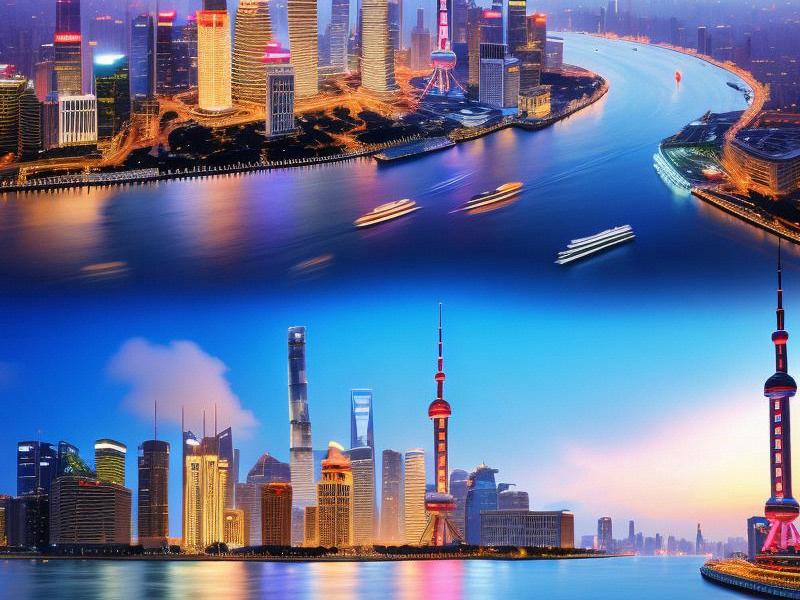Shanghai's Hidden Gems: Discovering the City's Unique Cultural Treasures
⏱ 2025-04-25 11:33 🔖 上海龙凤419
📢0℃

Nestled in the heart of the French Concession, the Shanghai Jewish Refugees Museum stands as a poignant reminder of the city's historical significance. Established in 2007, the museum is housed in the former site of the Ohel Moshe Synagogue, which was built in 1927. The museum tells the story of over 20,000 Jewish refugees who fled persecution in Europe during World War II and found sanctuary in Shanghai. Through photographs, documents, and personal artifacts, visitors can gain insight into the lives of these refugees and the unique role Shanghai played as a haven during one of the darkest chapters in human history.
Just a short walk from the museum, the Yuyuan Garden is a classical Chinese garden that offers a serene escape from the urban hustle and bustle. Built in the Ming Dynasty (1559-1673), the garden is a masterpiece of traditional Chinese landscaping, featuring pavilions, ponds, rockeries, and meticulously manicured gardens. The garden's name, "Yu Yuan," means "Garden of Happiness," and it has been a popular retreat for locals and tourists alike since its inception. Visitors can stroll along the winding paths, admire the intricate carvings on the stone bridges, and enjoy the tranquil ambiance that transports them back in time.
For those with a penchant for art and culture, the Power Station of Art, located in the former power plant of the China Pavilion at the 2010 World Expo, is a must-visit destination. As the first state-run contemporary art museum in China, the Power Station of Art showcases a diverse collection of modern and contemporary art from both Chinese and international artists. The museum's vast exhibition space, combined with its industrial architecture, creates a unique and inspiring environment for art lovers. Regular exhibitions, performances, and workshops make it a dynamic cultural hub in the city.
爱上海419论坛
No exploration of Shanghai's cultural scene would be complete without a visit to the Shanghai Museum of Traditional Chinese Medicine. Located in the former residence of the famous doctor Zhu Weizheng, the museum offers a fascinating look into the history and practice of traditional Chinese medicine (TCM). The museum's exhibits include ancient medical texts, herbal remedies, acupuncture tools, and detailed models of the human body based on TCM principles. Visitors can also participate in interactive displays that demonstrate the diagnostic methods used by TCM practitioners, such as pulse-taking and tongue examination.
For a taste of Shanghai's culinary heritage, the Old Street of Zhujiajiao is a hidden gem that should not be missed. This ancient water town, located about an hour from the city center, is a picturesque labyrinth of narrow streets, stone bridges, and traditional houses. The town is renowned for its authentic Shaoxing cuisine, which features fresh ingredients and delicate flavors. Visitors can sample local delicacies such as braised pork belly, stewed river eel, and sweet and sour Mandarin fish at the town's many restaurants and teahouses. The Old Street is also home to a variety of handicraft shops where visitors can purchase souvenirs such as silk scarves, porcelain, and calligraphy.
上海龙凤419手机
Another cultural treasure worth exploring is the Shanghai Propaganda Poster Art Centre, located in the former site of the Shanghai Textile Printing and Dyeing Factory. This unique museum showcases a vast collection of propaganda posters produced during China's revolutionary and socialist eras. The posters, which date back to the 1920s and 1930s, are not only visually striking but also provide valuable insights into the political and social movements of the time. The museum also hosts regular exhibitions and workshops that explore the evolution of Chinese poster art.
For those interested in the performing arts, the Shanghai Grand Theatre is a cultural landmark that offers a wide range of performances, including opera, ballet, symphony concerts, and contemporary dance. Designed by the French architect Jean-Marie Charpentier, the theater's futuristic design and state-of-the-art facilities make it a world-class venue. The theater's diverse programming ensures that there is always something for everyone, from classical masterpieces to innovative new works.
上海品茶工作室
Shanghai's rich cultural tapestry is further enriched by its vibrant neighborhoods, each with its own unique character and charm. The Xintiandi district, for example, is a trendy area that combines historic Shikumen architecture with modern shopping, dining, and entertainment options. The narrow alleyways of Xintiandi are lined with boutique shops, art galleries, and cafes, making it a favorite destination for both locals and tourists. Another neighborhood worth exploring is Tianzifang, a creative enclave that has transformed a former industrial area into a haven for artists, designers, and entrepreneurs. The cobblestone streets of Tianzifang are dotted with charming shops, galleries, and cafes, creating a lively and eclectic atmosphere.
In conclusion, Shanghai is a city that offers a wealth of cultural experiences beyond its well-known landmarks. From historical museums and classical gardens to contemporary art galleries and traditional markets, the city's hidden gems provide a deeper understanding of its rich history and vibrant culture. Whether you are a history buff, an art lover, a foodie, or simply someone looking to explore the city's lesser-known corners, Shanghai's cultural treasures are sure to leave a lasting impression.
Shanghai's Renaissance: A Journey Through the Modern Metropolis【梧桐树下的红妆与素手:上海知识女性的百年突围】Shanghai Beauties: A Glimpse into the Elegance and Diversity of Shanghai Women《海派佳人:上海美女的百年时尚演变史》Shanghai 4500: Quantum Delta Synergy and the Photonic Civilization MatrixShanghai Beauties: A Journey Through the Beauty of the City and Its People【夜色经济学:上海高端社交场所的百年嬗变】Shanghai 4550: Quantum Apex Aesthetics and the Galactic Femininity Nexus《潮汐之间:上海都市圈的文化褶皱》《鎏金年代:上海娱乐会所的时空折叠》

